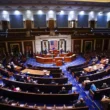2010’ların başında, Silvergate Bank birçok kişi tarafından bilinmeyen sıradan bir bankayken, son yıllarda kripto para dünyasında büyük bir yer edinmiş, 2013’te kripto para işlemleri yapan müşterilere odaklanmaya başlamıştı. Bu stratejiyi bir süre başarılı bir şekilde yürüten şirket, 2017’de 1 milyar dolar olan mevduatını 2021’de 16 milyar dolara yükseltti; bu büyüme, bankanın mart 2023’teki iflasına kadar sürdü.
Ancak bu hızlı büyümenin yanı sıra riskler de arttı. Federal Rezerv’in incelemelerine göre, bu mevduatların büyük bir kısmı sigortasız ve faizsizdi, bu da bankanın tek sektörlü bir borç veren haline gelmesine yol açtı. Kripto piyasalarındaki dalgalanmalar ve FTX’in çöküşü gibi büyük olaylar da bankanın müşteri tabanını olumsuz etkiledi.
Bankanın İflasına En Büyük Etken Yönetimsel Zayıflıklardı
Bankanın müşteri tabanını kaybetmesine ilişkin sorunlar sadece kripto bağımlılığıyla sınırlı değildi. Yönetimsel hatalar ve adam kayırmacılık da bankanın çöküşünde büyük bir rol oynadı. Eski CEO Alan Lane, ailesinden birkaç kişiyi üst düzey görevlere getirdiği için eleştiri oklarının hedefi oldu. Ancak Fed raporunda, bankanın genel olarak kurumsal yönetim ve risk yönetimi yetenekleri, hızlı büyümesine ve artan karmaşıklığına ayak uyduramadığı yazdı.
“Bankanın kurumsal yönetim ve risk yönetimi yetenekleri, bankanın hızlı büyümesine, artan karmaşıklığına ve gelişen risk profiline ayak uyduramadı.”
Federal Rezerv Raporu.
Eğer Silvergate, bankacılık düzenlemelerini daha dikkatli takip etmiş olsaydı, belki de bu duruma düşmezdi. Ancak, Federal Rezerv’in de yeni risk koruma tedbirleri oluşturması konusunda daha aktif olması gerekiyordu. Hem bankanın hem de denetçilerin bu süreçte hataları vardı ve bu, Silvergate’in çöküşüne yol açtı.








